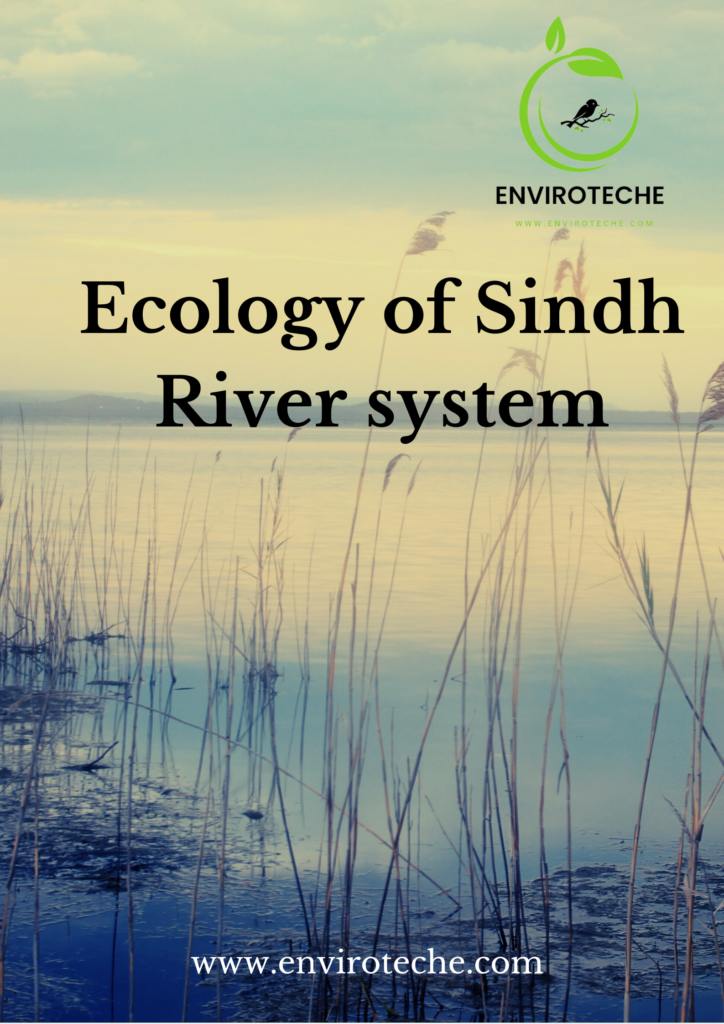Table of Contents

Located in Pakistan’s Sindh province, the Sindh River System is notable for its biological diversity and importance. It is defined by a system of rivers, streams, and wetlands that provide habitat for a broad range of plant and animal species, making it a vital lifeblood for locals and visitors alike. Let’s look into the ecology of the Sindh River System and its many facets.
What are the Water Source and Irrigation?
The Sindh River System gets the majority of its water from the Indus River, which is its principal source. Its flow provides sustenance to extensive agricultural regions along its banks and in the plains that surround it. Water is brought to agricultural areas and supported crops such as wheat, rice, cotton, sugarcane, and a wide variety of fruits and vegetables by the use of an enormous network of canals and irrigation channels. This irrigation system is critical for the lives of millions of farmers and plays an important part in Pakistan’s agricultural economy. It also plays a key role in India’s agricultural economy.
Introduction of Indus River system
Flowing through three countries—India, China, and Pakistan—the Indus River has a total length of around 3,180 kilometres (1,976 miles). The Indus River begins its journey in Tibet, China, flows through India and into Pakistan near Ladakh, and then empties into the Arabian Sea through the expansive Indus River Delta in Pakistan’s Sindh region.
The Indus receives water from several rivers that flow into it; among of them include the Jhelum, Chenab, Ravi, Beas, and Sutlej. These side streams help increase the river’s volume, making it more useful for agricultural irrigation.
- The river’s water percolates underground, replenishing aquifers. These aquifers are essential for supporting agriculture and cities far from rivers with potable water.
- The Indus River is very significant historically and culturally since it was the site of one of the oldest urban civilizations in the world, the Indus Valley Civilization. Along the river’s path, archaeological monuments like Mohenjo-Daro and Harappa provide information about ancient human communities and ways of life.
- The river’s flow rises dramatically during the monsoon season, and its broad swamps serve as natural buffers to reduce the severity of floods. Wetlands and flood zones help mitigate flooding by soaking up surplus water.
How Hydrology of Sindh river system works?
In terms of its hydrology, the Sindh River System is principally created by the Indus River, which begins its journey as a river in Tibet, travels through India, and then enters Pakistan, where it travels through the Sindh region. The melting of snow and glaciers in the Himalayan ranges throughout the spring and summer months is the primary source of water for the Indus River. In addition, during the months of July and September, this area is subject to a monsoon season, which brings with it significant amounts of precipitation and further adds to the river’s flow. The flow of the river is greatly reduced during the dry months that winter brings.
The natural shifts in water flow that occur throughout the year are very necessary for the ecosystem of this area. It makes it possible for some types of fish to spawn and reproduce during the monsoon season, when water levels are at their highest and there is an abundance of food supplies. On the other hand, the low flow that occurs during the dry season offers the riverbanks and wetlands the chance to renew and restore at this time.
Describe the Biodiversity of Sindh River System
The Sindh River System is home to a wide variety of plant and animal species, contributing to the region’s rich biodiversity. The aquatic environment is home to a wide variety of fish species, one of which is an endangered subspecies of the South Asian river dolphin known as the Indus River Dolphin (Platanista gangetica minor). One of the most important creatures to be saved by the river system’s conservation efforts is this very uncommon and threatened species.
In addition to catfish (Pangasius pangasius), rohu (Labeo rohita), murrel (Channa striata), and carps (Cyprinidae family), there are a variety of other fish species that thrive in the river and its tributaries. The local fishing communities and the fisheries sector in the area rely heavily on these fish because of their importance.
The areas prone to and marshes that run beside the river serve as critical habitats for a wide variety of bird species, particularly during the months of winter and migration. Migratory birds go as far as Siberia and Central Asia to visit the wetland areas. Some of the birds that make the journey include the bar-headed goose (Anser indicus), the demoiselle crane (Grus virgo), and a variety of ducks and waders. These migratory species rely heavily on these wetland areas for both eating and resting while they are on t journey.
Wetlands and Floodplains of Sindh River System
Both wetlands and floodplains play important roles in the ecosystem that is supported by the Sindh River System. During times of severe rainfall and flooding, they function as natural buffers by absorbing and storing excess water, so reducing the likelihood that floods would cause significant damage farther downstream. In addition to this, the wetland ecosystem is crucial for the replenishment of groundwater and the upkeep of the water table in the neighbouring regions.
These wetland areas have a high level of biological diversity and are abundant in a variety of nutrients and organic materials. Reeds, bulrushes, and other types of floating vegetation are among the aquatic plants that thrive under these conditions. Birds have a place to hide and a place to nest because to the thick foliage that can be found in these wetlands, which also serves as a sanctuary for smaller aquatic critters.
Dependence on Humans
The Sindh River System is very important to the local human population because of the region’s high density of people. The majority of the people who live along the riverbanks engage in agriculture as their main source of income. The water from the river and its tributaries is heavily used for irrigation purposes in order to cultivate crops like as wheat, rice, cotton, and sugarcane. In order to guarantee that the water from the river is distributed appropriately for agricultural purposes, the water’s flow is managed through a network of barrages and canals.
The resources provided of the river are extremely important to the fishing sector. Many of the local inhabitants rely on fishing as their primary source of income, and it is necessary for both commercial and subsistence fishing operations.
Threats and Conservation of Sindh River System
The ecology and long-term viability of the Sindh River System are threatened by a number of factors. Water contamination is one of the most urgent problems that we face. The river water becomes contaminated due to agricultural runoff that contains pesticides and fertilisers, industrial discharges, and untreated home garbage. This has an impact not only on the aquatic life in the river but also on human health. Pollutants have the potential to cause a reduction in oxygen levels, the growth of toxic algae, and the buildup of toxins in fish, which will have an effect on the whole food chain.
Overfishing and other damaging fishing practises, such as the use of fine nets and illegal fishing techniques, have resulted in decreased fish populations and put the existence of cetain species in jeopardy.
The natural flow of the river has been disrupted and the amount of water that is available farther downstream has been diminished as a result of the building of dams, barrages, and other water diversion projects. This alteration to the natural flow of the river causes problems for the migratory patterns of fish and has a negative impact on the habitats of wetlands.
Loss of habitat and fragmentation of remaining habitat have been caused by urbanisation and deforestation in the catchment regions, which has upset the delicate balance of the ecosystem.
Conservation Efforts:
In order to preserve and restore the ecosystem of the Sindh River System, conservation activities are very necessary. These initiatives consist of the following:
- Putting into effect stringent laws to reduce water contamination and encourage environmentally responsible methods of waste management.
- The creation of protected areas and sanctuaries for endangered species like the Indus River Dolphin, as well as the preservation of essential wetland ecosystems, are both important conservation efforts.
- Enforcement of sustainable fishing practises, regulation of fishing seasons, and promotion of community-based fisheries management are all important aspects of fishery management.
- Adopting water management solutions that take biological flows into account and place a priority on the preservation of the river’s natural processes is essential.
- Encouraging afforestation and reforestation in the catchment regions as a means of preventing soil erosion and preserving the quality of the water supply.
It is very necessary for there to be cooperation between governmental institutions, local communities, and environmental organisations in order for conservation efforts in the Sindh River System to be successful. We can guarantee the resilience of this important river system and the well-being of both the environment and the people who rely on it if we protect its ecosystem in the best way we can.
Check Other Schlorships:
- FREE Earth-inspired courses
- The Graduate Application Portal for King Fahd University, Saudi Arabia is open.
- International Excellence Scholarship 2023-24
- Scholarship in USA
Author detail:
Shahzeen Ashfaq, Iqra Akram
Department of Environmental Sciences, Government College University Faisalabad


